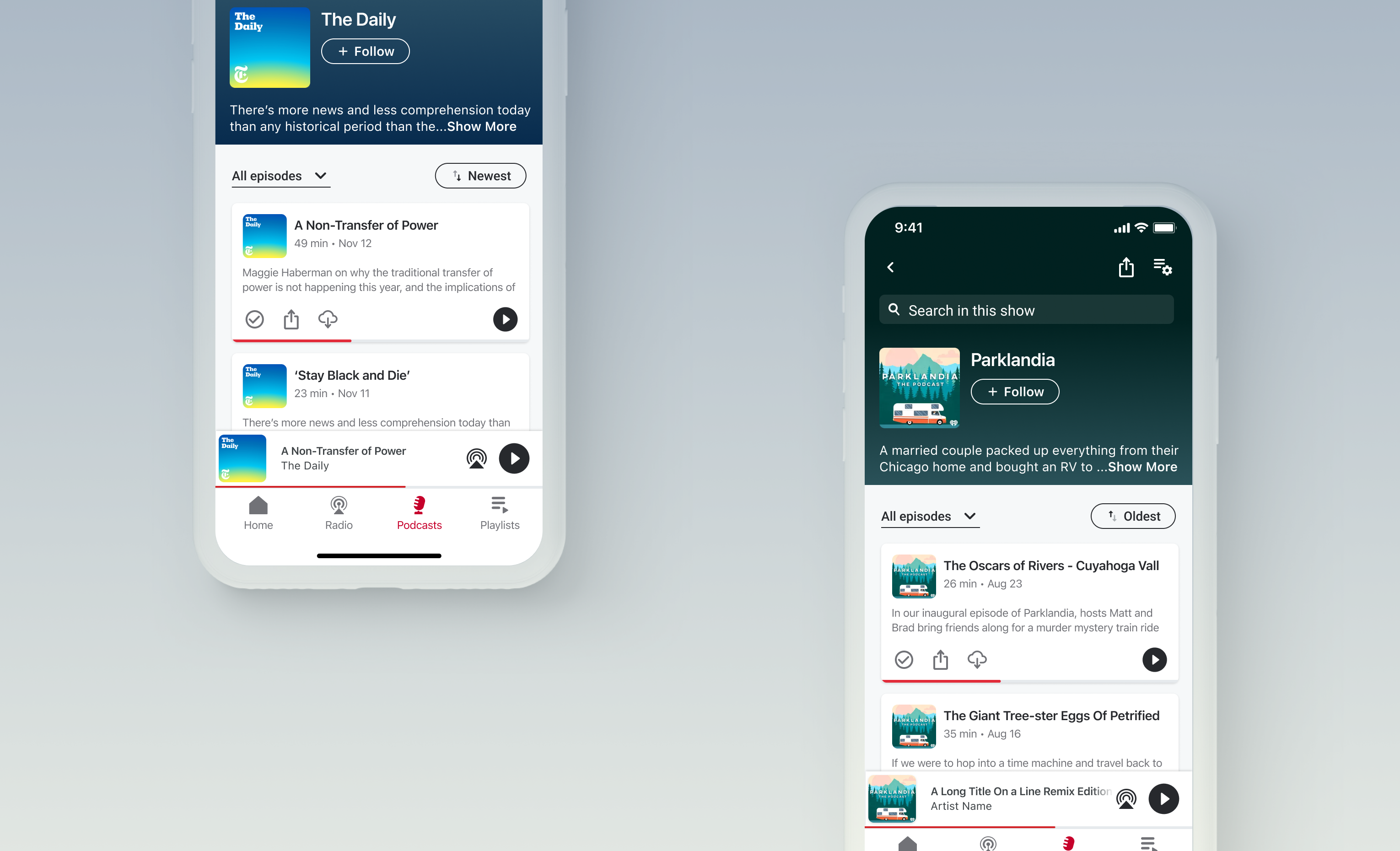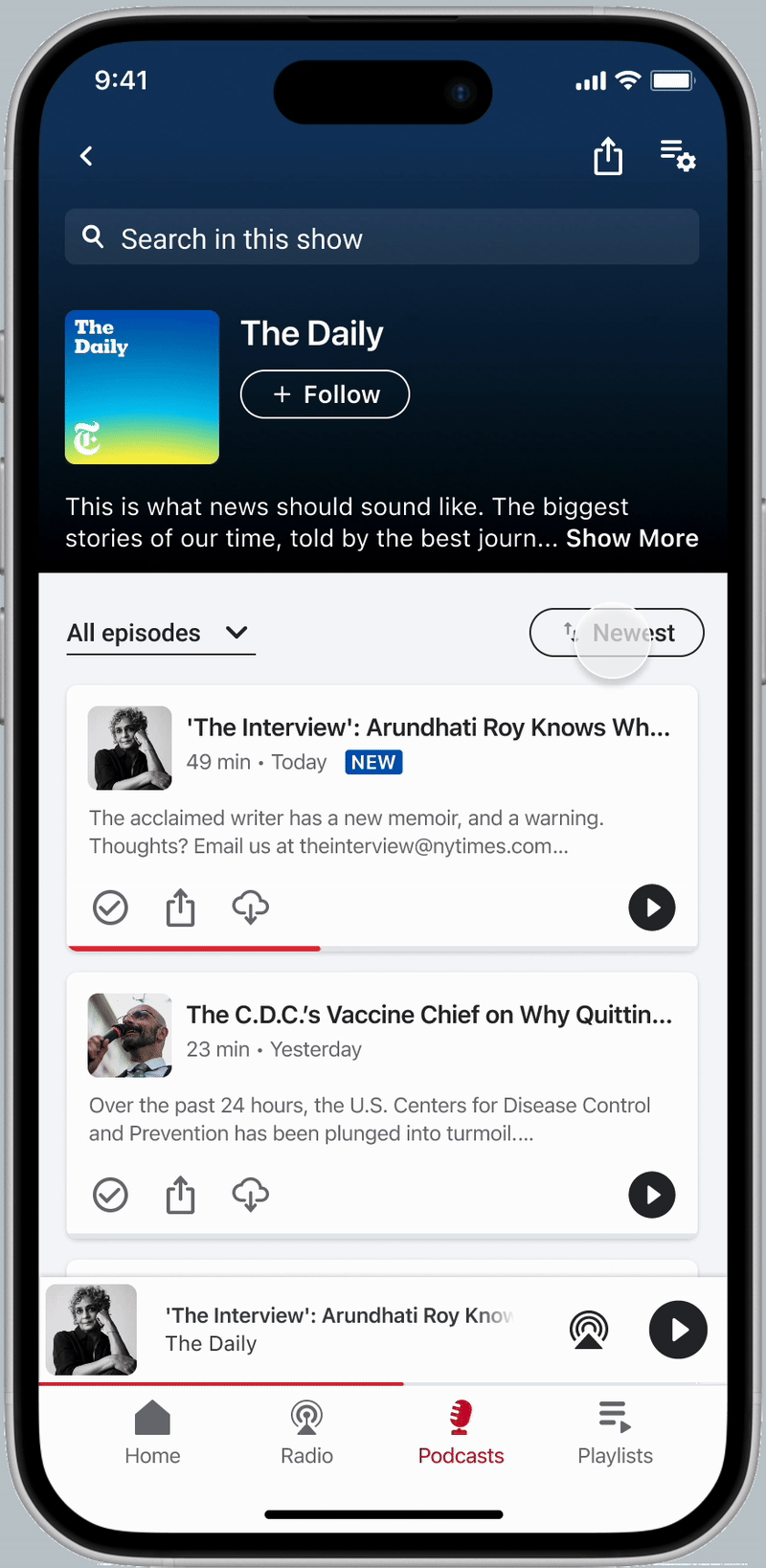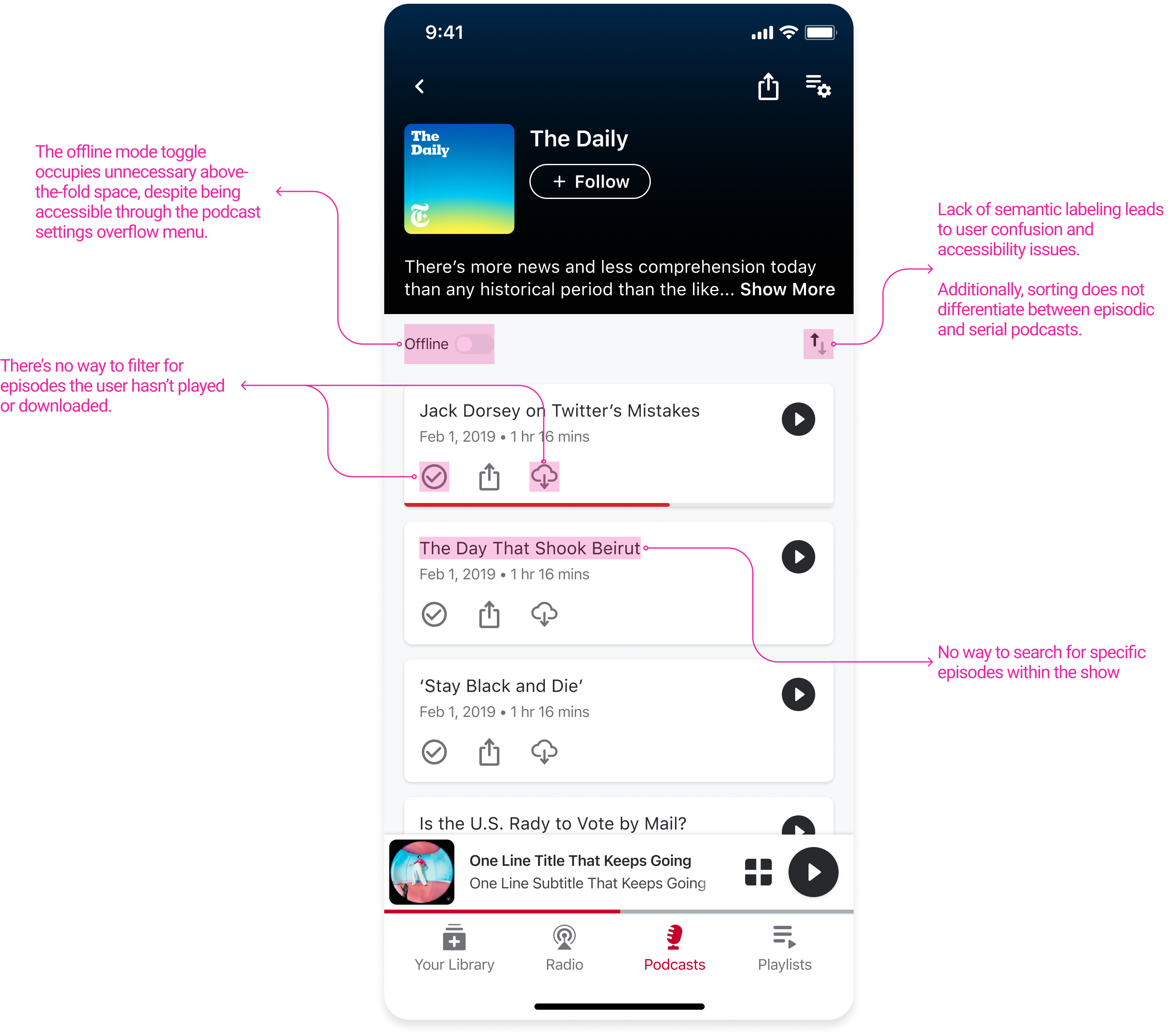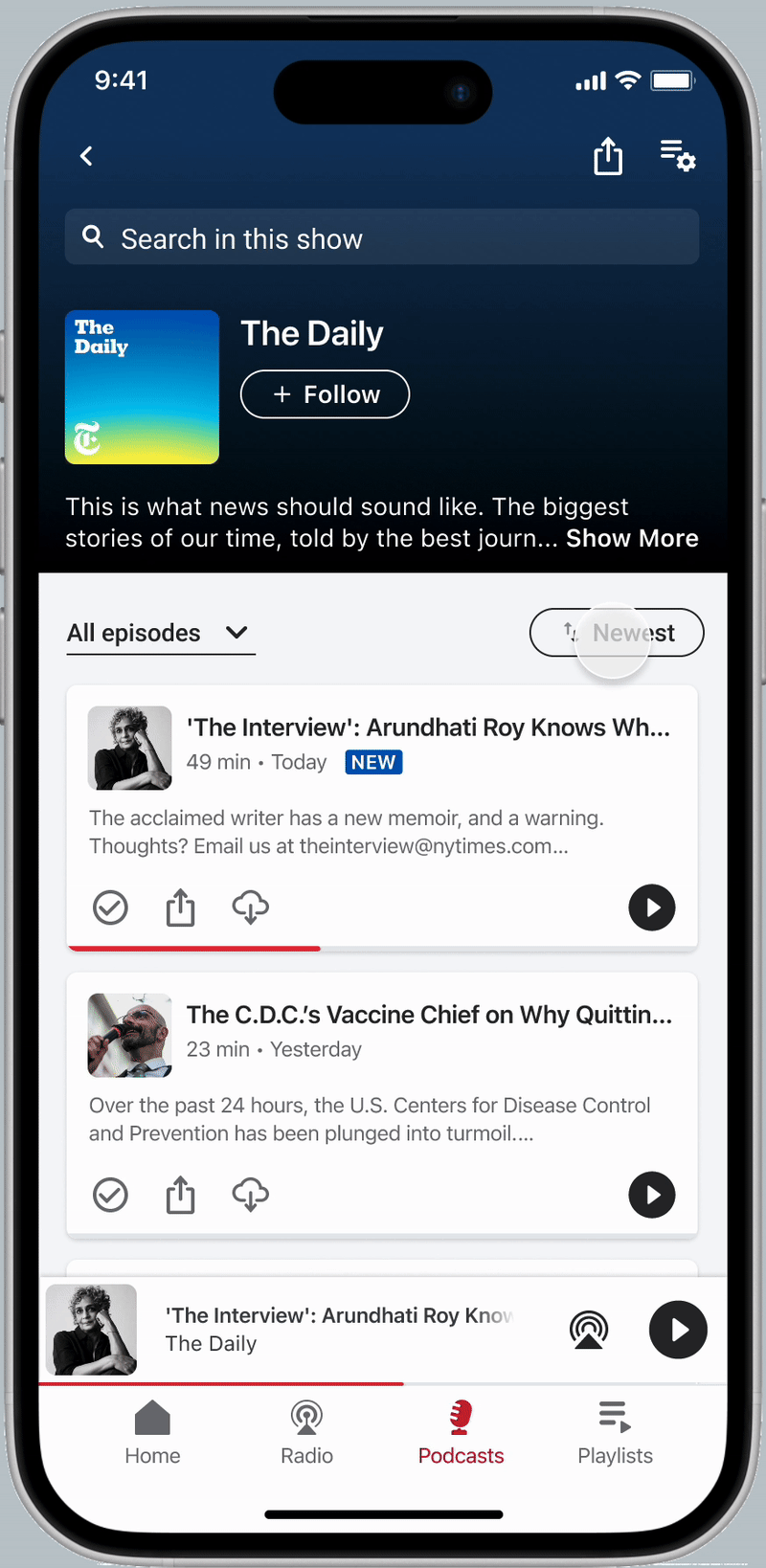OVERVIEW
How can we improve episode discovery and navigation to retain users and keep them engaged?
iHeartRadio's podcast platform offers an expansive library, with countless shows containing hundreds, if not thousands, of episodes. Despite this wealth of content, a significant challenge for users has been the lack of intuitive tools for discovering and navigating individual episodes, especially within a particular series. So how can we improve episode discovery and navigation to retain users and keep them engaged?This case study details my approach to redefining the user experience for podcast episode navigation, with a focus on designing and implementing episode-level search and improving backlog navigation on show profile pages and within the global search page.









